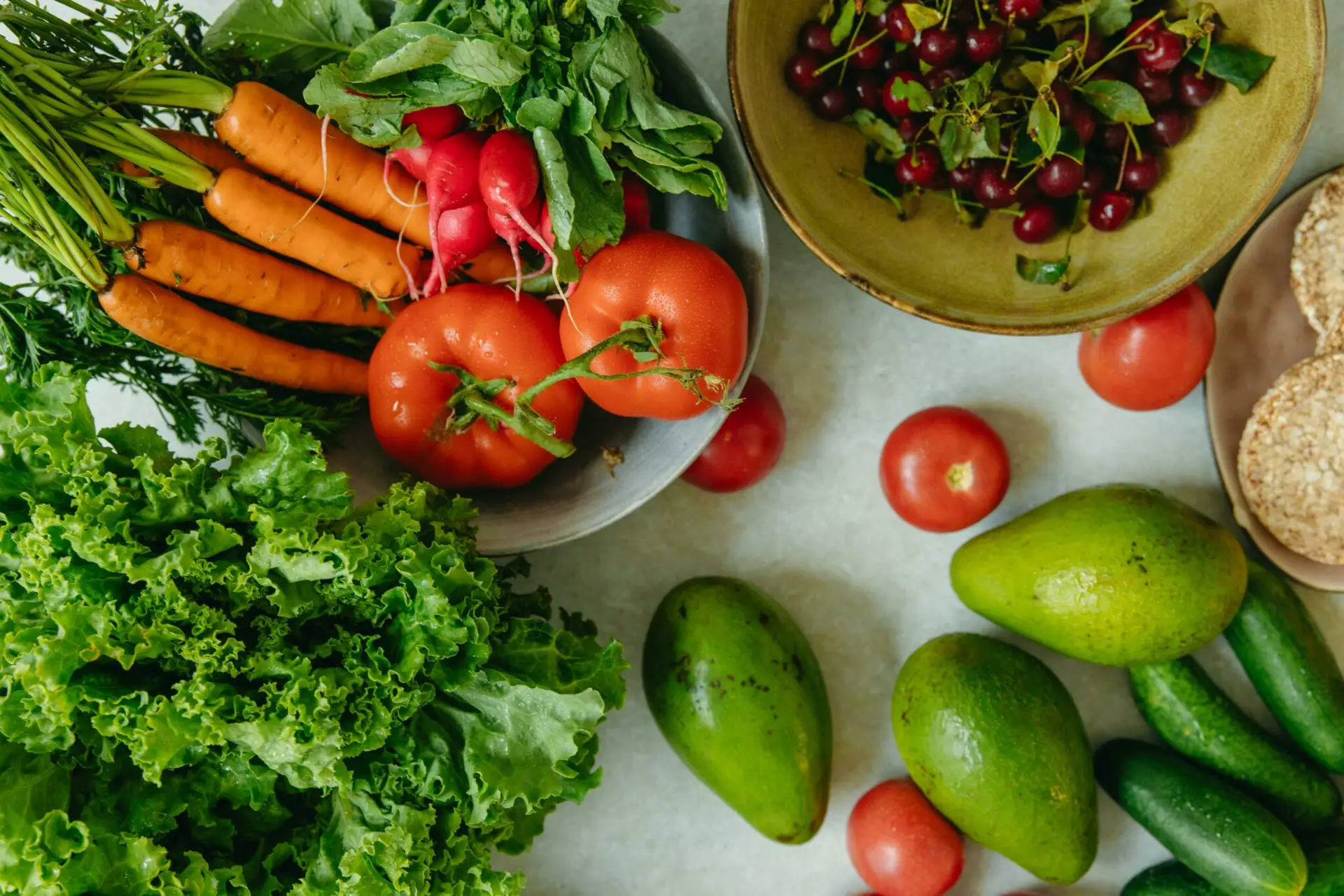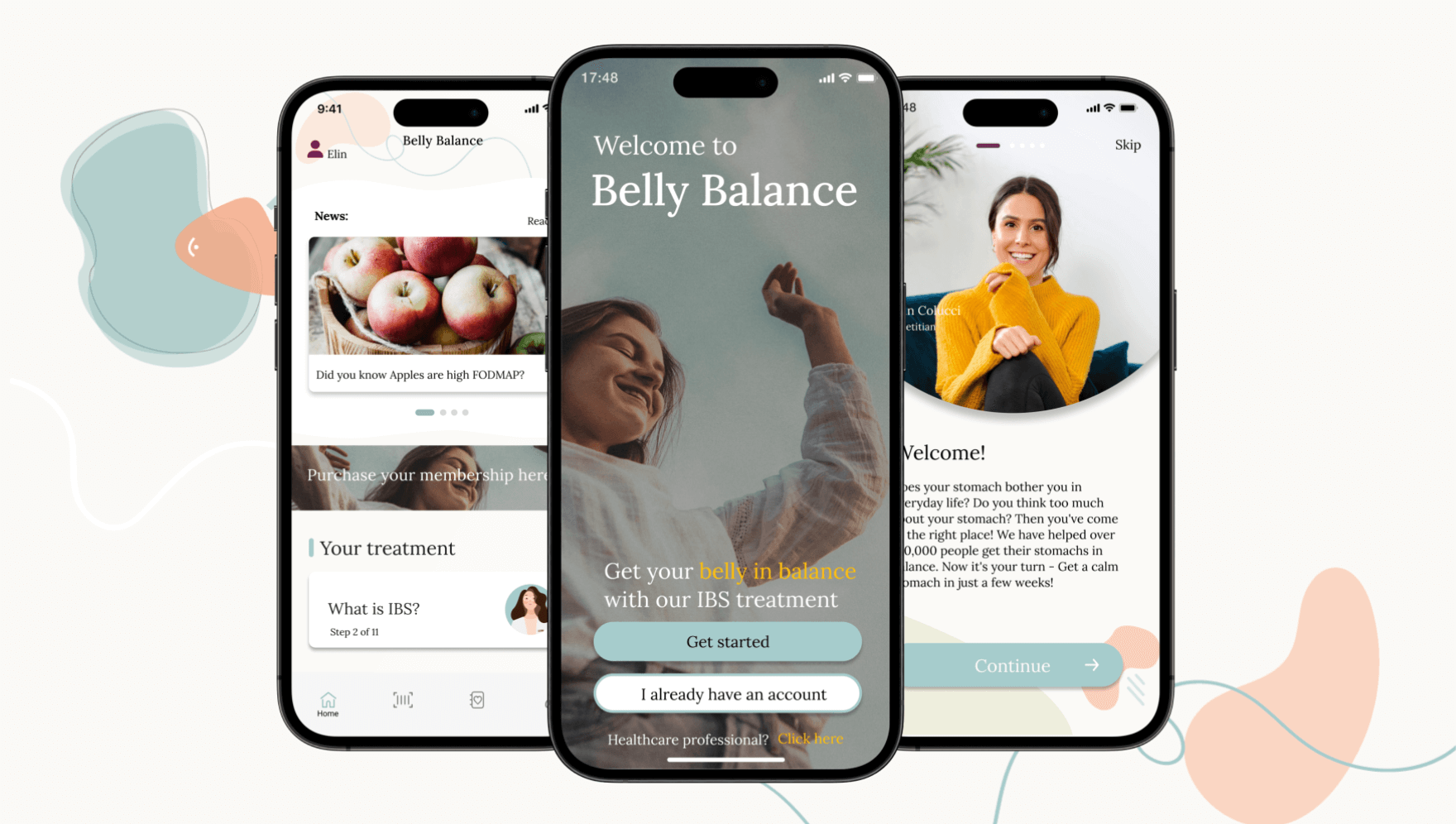
Vegetables and FODMAP
The fact is that many of us don’t eat enough vegetables. In Sweden, only about 2 out of 10 people eat enough vegetables per day, and it’s similar across the Western world. We should ideally eat AT LEAST 500 grams of vegetables and fruit EVERY day to feel good and get the nutrients and fiber we need. When dealing with a sensitive stomach and following the FODMAP diet, it can be an extra challenge to get enough vegetables, but it’s by no means an impossible task.
Start with vegetables for breakfast
More vegetables for snacks
Adding a handful of cabbage or spinach to your FODMAP-friendly smoothie is a great way to ‘hide’ vegetables in your breakfast. It won’t change the taste much, though it might give it a different color. Feel free to try our morning smoothie and add spinach, or make a green smoothie.
Fiber helps keep you fuller and more satisfied for longer. Try dipping carrot, cucumber, or red pepper in low-FODMAP hummus. A small box of cherry tomatoes can replace a fruit.
Fill the soup and casserole with vegetables
Minced meat sauce, and in fact all stews, are perfect for packing with vegetables. Add grated carrots, parsnip, zucchini, or a few handfuls of leafy greens (chard, spinach, kale) to make the dish even tastier. Then serve with a small green salad or haricots verts on the side.
Soups are liquid vegetables. Blend them or leave them in chunks. If you have leftover grilled vegetables, make a soup by using FODMAP-friendly broth/stock, a handful of fresh herbs, and blend into a smooth soup. Try a lentil and carrot soup.
Boost your salad
There are so many ways to boost a salad so it becomes a real nutrition and fiber bomb. From light green salads with mustard vinaigrette to Greek salad with tomatoes, cucumber, olives, and feta. A good rule of thumb is: the crunchier, the better. Broccoli and cabbage contain more nutrients and fiber than lettuce and cucumber. Dare to try new combinations. Mix in finely shredded raw root vegetables, sprouts, fresh herbs, and low-FODMAP beans and lentils. Or why not make a completely vegetarian dinner—carrot patties with millet salad?
Create balanced meals
Most of us tend to put too many carbohydrates and proteins and not enough vegetables on our plates. A good rule of thumb is to divide your plate into four parts:
- One-quarter carbohydrates (potatoes , rice, quinoa, root vegetables, gluten-free pasta)
- One-quarter protein (fish, chicken, meat, tofu, Quorn, tempeh, legumes)
- Half the plate with FODMAP-friendly vegetables, ideally three colorful ones. For example, use carrots, red peppers, and edamame in a stir-fry, or pumpkin, eggplant, and parsley in a roasted vegetable mix. Veggie skewers on the grill or in the oven are also a great trick: try a mix of red or yellow peppers, eggplant, zucchini, and a little corn if you can tolerate it.
Belly Balance digital treatment
In the Belly Balance app, you can log symptoms, keep a food diary, scan products, find FODMAP lists, and much more to help you manage your IBS.
Sofia Antonsson
Reg. Dietitian, Belly Balance
Read more about

IBS - What is it?
Bloated , constipated or having a gassy stomach? IBS or Irritable Bowel Syndrome is a functional gastrointestinal disorder, meaning no physical issues can be found in the stomach or intestines; they just don’t function quite as they should.

How the app works
Download the app and become part of our community. We assist you in achieving a calm and happy stomach through treatment and tools available directly in the app.

About FODMAP
By learning which foods upset your stomach, you can make conscious choices and get quick symptom relief. With the low FODMAP diet, you receive structured assistance in understanding which foods your body tolerates better than others. No more guessing and pondering – you get the answer straight away!

